
How to Use Adafruit Charlieplex 9x16 Yellow: Examples, Pinouts, and Specs
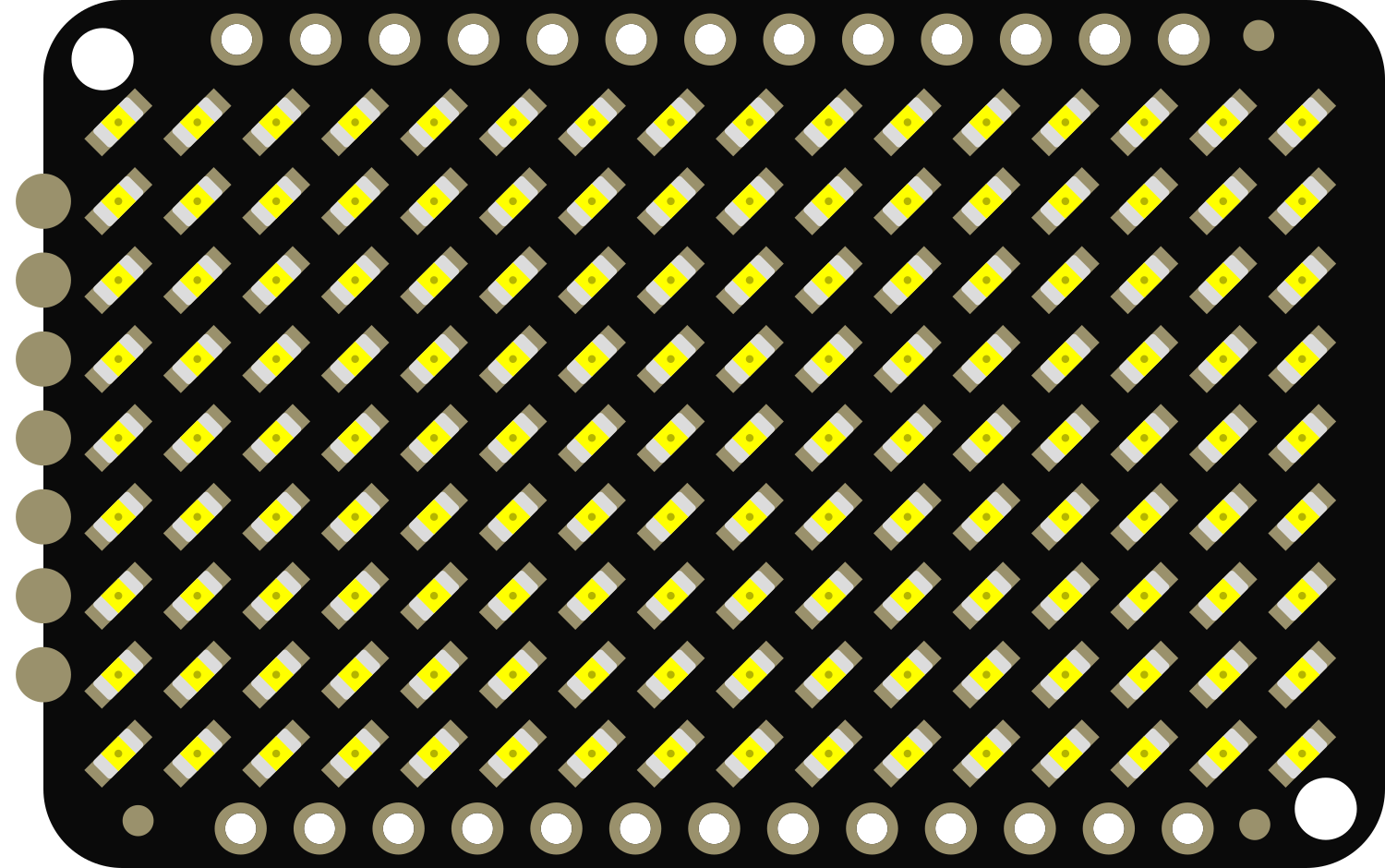
 Design with Adafruit Charlieplex 9x16 Yellow in Cirkit Designer
Design with Adafruit Charlieplex 9x16 Yellow in Cirkit DesignerIntroduction
The Adafruit Charlieplex 9x16 Yellow is an innovative LED matrix display that leverages the charlieplexing technique to control a grid of 144 yellow LEDs using a minimal number of microcontroller pins. This compact and versatile display is ideal for creating eye-catching visual displays, and it's perfect for projects that require a small footprint without sacrificing brightness or functionality. Common applications include wearable electronics, informational displays, and custom user interfaces.
Explore Projects Built with Adafruit Charlieplex 9x16 Yellow
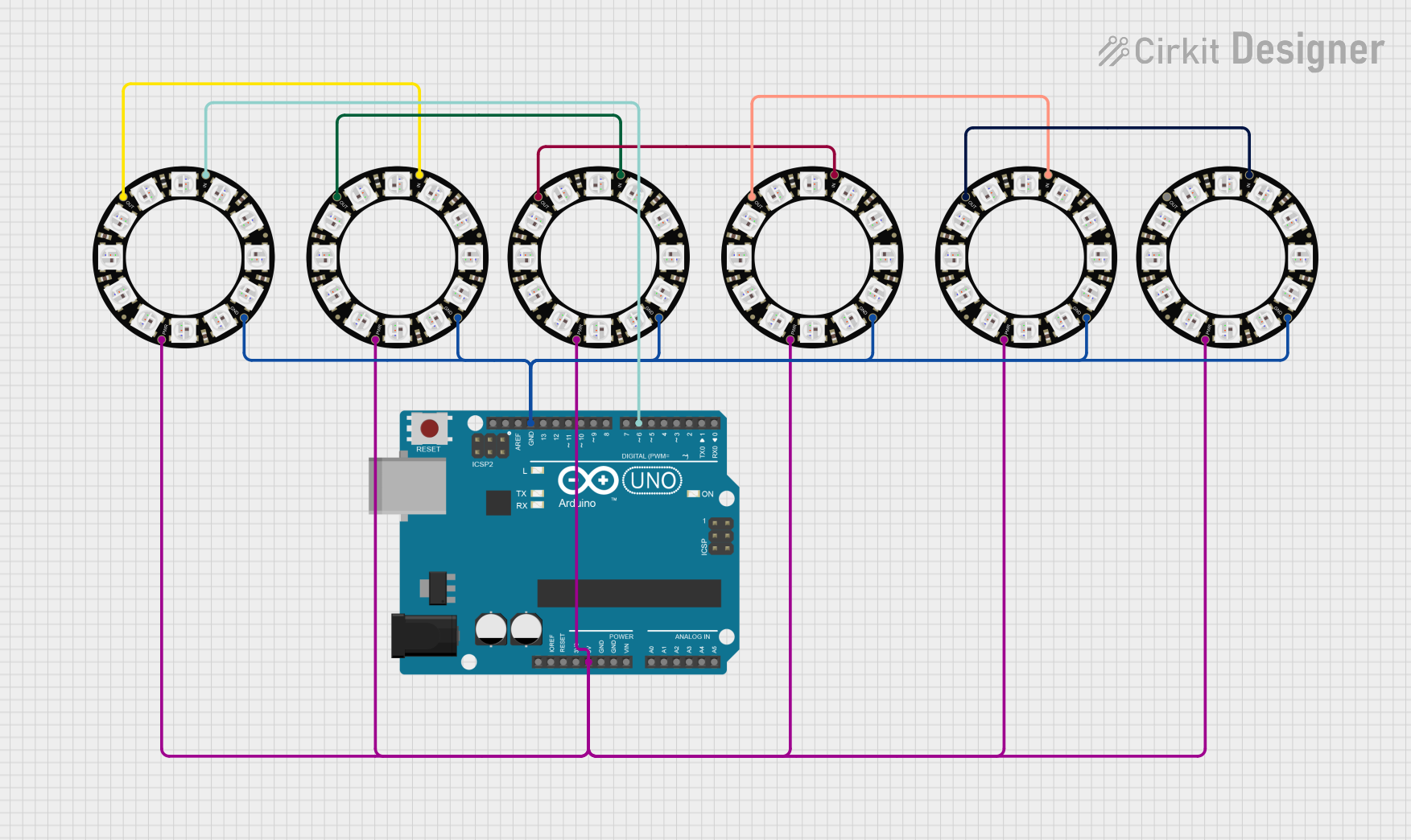
 Open Project in Cirkit Designer
Open Project in Cirkit Designer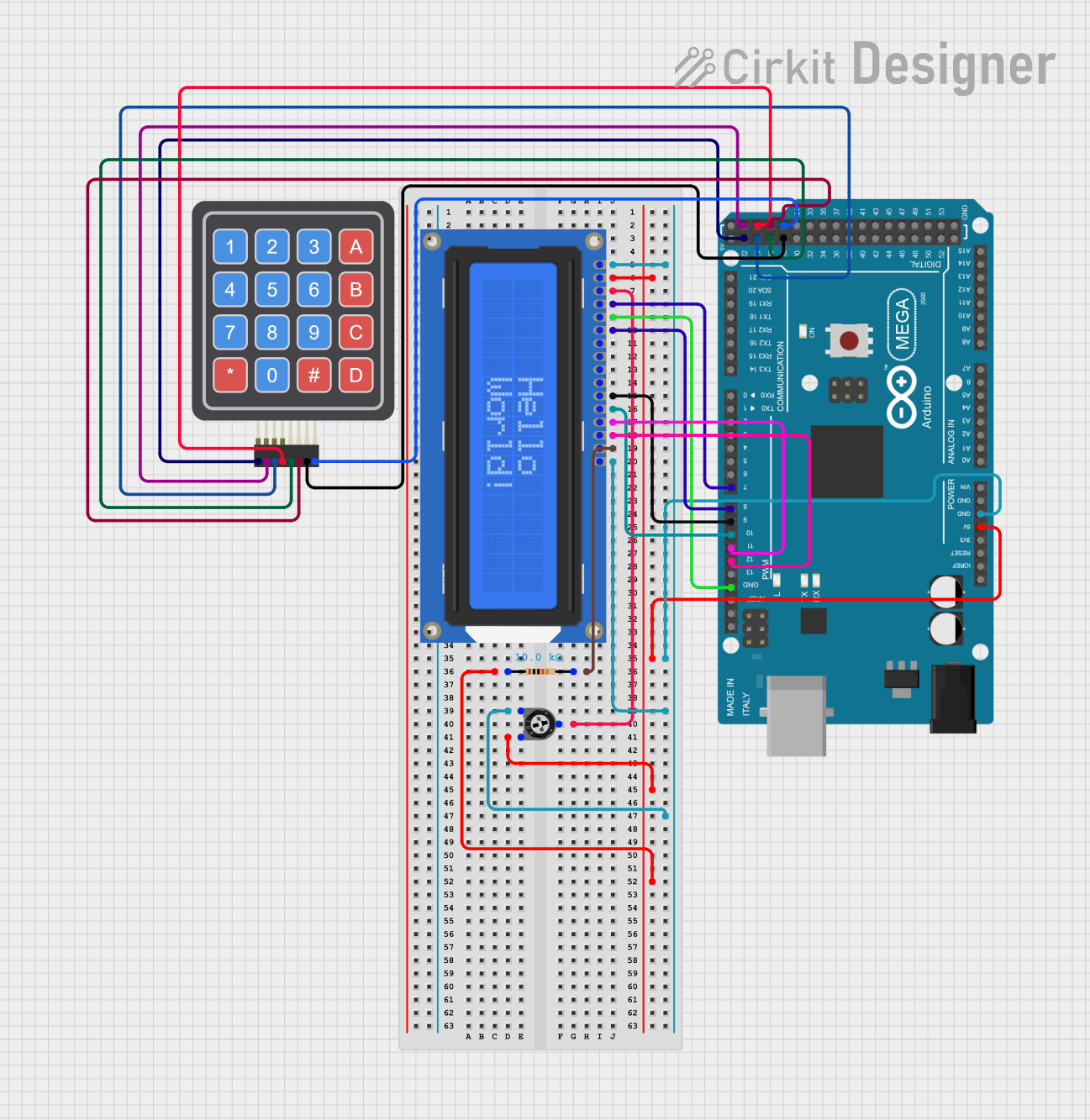
 Open Project in Cirkit Designer
Open Project in Cirkit Designer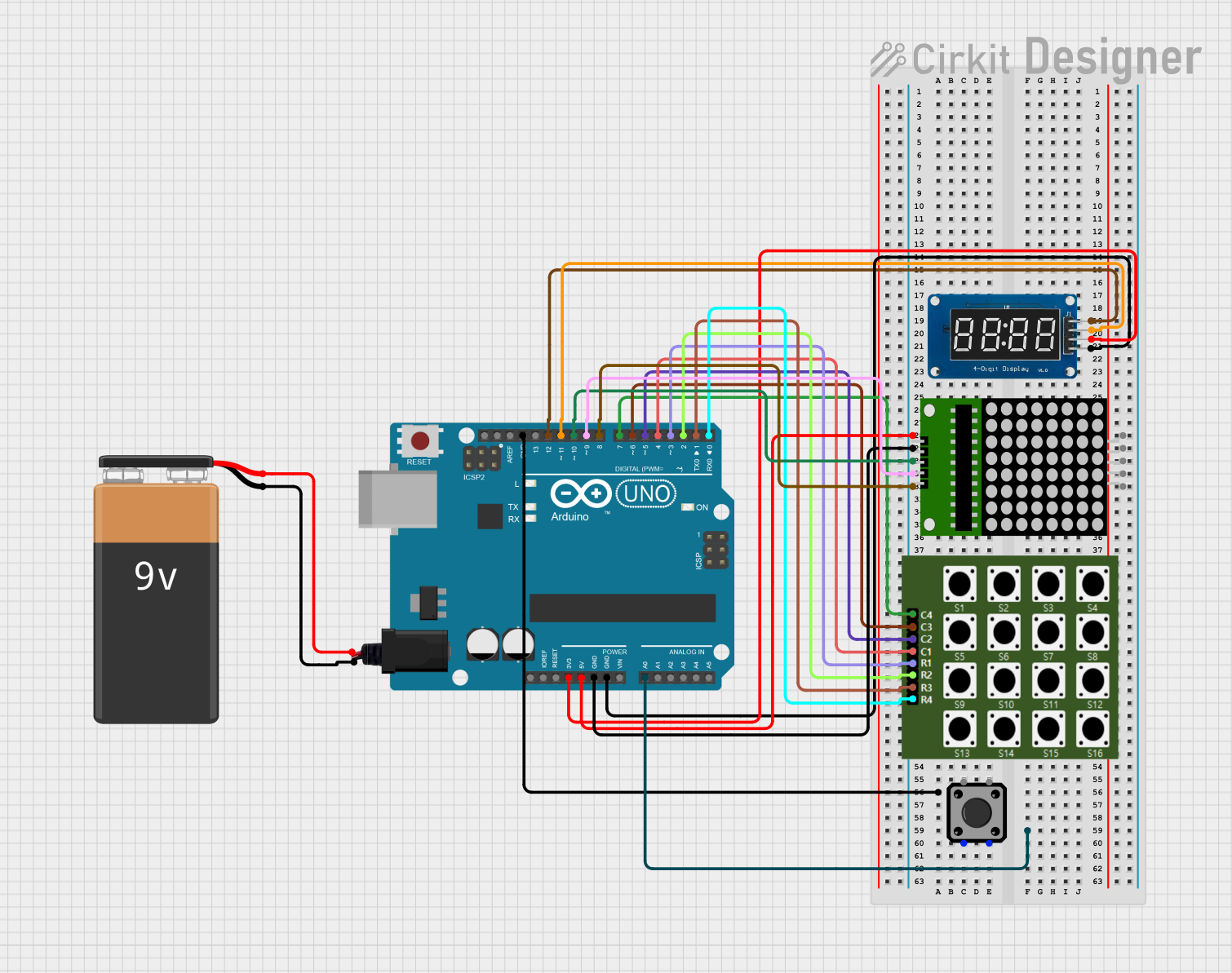
 Open Project in Cirkit Designer
Open Project in Cirkit Designer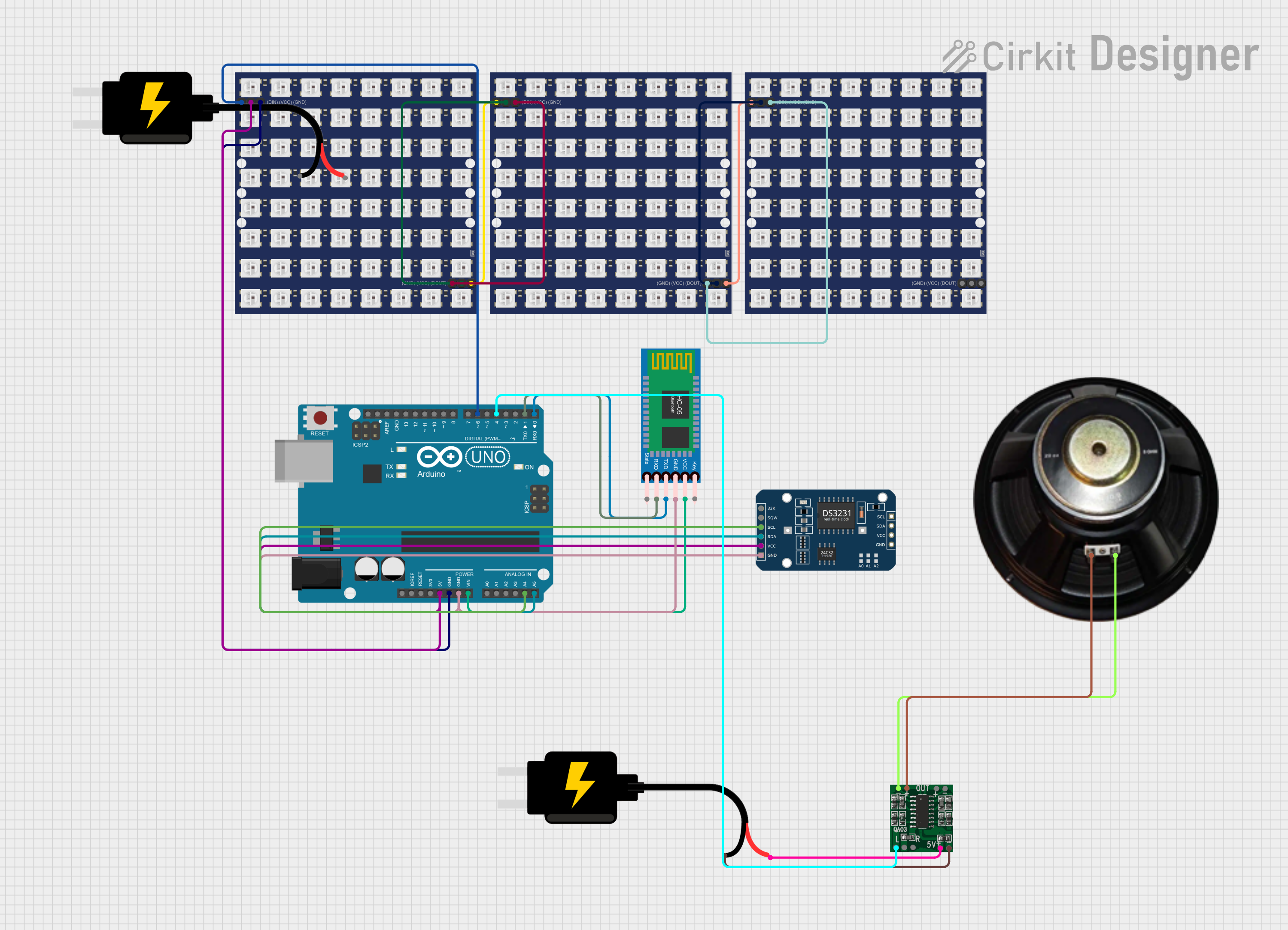
 Open Project in Cirkit Designer
Open Project in Cirkit DesignerExplore Projects Built with Adafruit Charlieplex 9x16 Yellow

 Open Project in Cirkit Designer
Open Project in Cirkit Designer
 Open Project in Cirkit Designer
Open Project in Cirkit Designer
 Open Project in Cirkit Designer
Open Project in Cirkit Designer
 Open Project in Cirkit Designer
Open Project in Cirkit DesignerTechnical Specifications
Key Technical Details
- LED Color: Yellow
- Matrix Size: 9 columns x 16 rows
- Total LEDs: 144
- Operating Voltage: 3.0V - 5.5V
- Max Current (per LED): 20mA
- Communication: I2C interface
Pin Configuration and Descriptions
| Pin Number | Name | Description |
|---|---|---|
| 1 | GND | Ground connection |
| 2 | VCC | Power supply (3.0V - 5.5V) |
| 3 | SDA | I2C Data line |
| 4 | SCL | I2C Clock line |
| 5 | ADDR | I2C Address selection (connect to GND or VCC) |
Usage Instructions
Connecting to a Circuit
- Connect the GND pin to the ground on your microcontroller.
- Connect the VCC pin to a 3.0V - 5.5V power supply.
- Connect the SDA and SCL pins to the I2C data and clock lines on your microcontroller.
- Optionally, connect the ADDR pin to GND or VCC to set the I2C address if using multiple displays.
Important Considerations and Best Practices
- Ensure that the power supply voltage does not exceed 5.5V to prevent damage to the LEDs.
- Limit the current to 20mA per LED to avoid overheating and ensure a long lifespan.
- Use pull-up resistors on the SDA and SCL lines if your microcontroller does not have built-in pull-ups.
- When addressing multiple displays, make sure each has a unique I2C address by setting the ADDR pin accordingly.
Example Code for Arduino UNO
#include <Wire.h>
#include <Adafruit_IS31FL3731.h>
// Create an instance of the display
Adafruit_IS31FL3731 matrix = Adafruit_IS31FL3731();
void setup() {
Wire.begin(); // Initialize I2C
matrix.begin(); // Initialize the display
}
void loop() {
// Clear the display buffer
matrix.clear();
// Draw a simple pattern
for (int i = 0; i < 9; i++) {
for (int j = 0; j < 16; j++) {
matrix.drawPixel(i, j, (i + j) % 2 ? 255 : 0);
}
}
// Display the buffer on the LEDs
matrix.display();
delay(500);
}
Troubleshooting and FAQs
Common Issues
- LEDs not lighting up: Check the power supply and I2C connections. Ensure that the ADDR pin is correctly set if using multiple displays.
- Dim or flickering LEDs: Verify that the power supply is within the specified voltage range and that the current per LED is not exceeding 20mA.
- Display not responding to I2C commands: Confirm that the correct I2C address is being used and that there are pull-up resistors on the SDA and SCL lines if needed.
Solutions and Tips for Troubleshooting
- Double-check wiring connections and solder joints for any loose connections or shorts.
- Use a multimeter to verify the voltage levels at the VCC and GND pins of the display.
- Ensure that the microcontroller's I2C lines are functioning correctly by testing with another I2C device.
- Check the Arduino's serial output for any error messages that can help diagnose communication issues.
FAQs
Q: Can I daisy-chain multiple Charlieplex 9x16 displays? A: Yes, you can connect multiple displays in series by ensuring each one has a unique I2C address.
Q: How do I control individual LEDs in the matrix?
A: Individual LEDs can be controlled using the drawPixel function provided by the Adafruit_IS31FL3731 library, specifying the column, row, and brightness level.
Q: What is the maximum number of displays I can control with one microcontroller? A: The maximum number of displays is limited by the number of unique I2C addresses available. Check the datasheet for the IS31FL3731 driver chip for more details.
Q: Can I use this display with a 3.3V microcontroller? A: Yes, the display can operate at voltages as low as 3.0V, making it compatible with 3.3V microcontrollers.